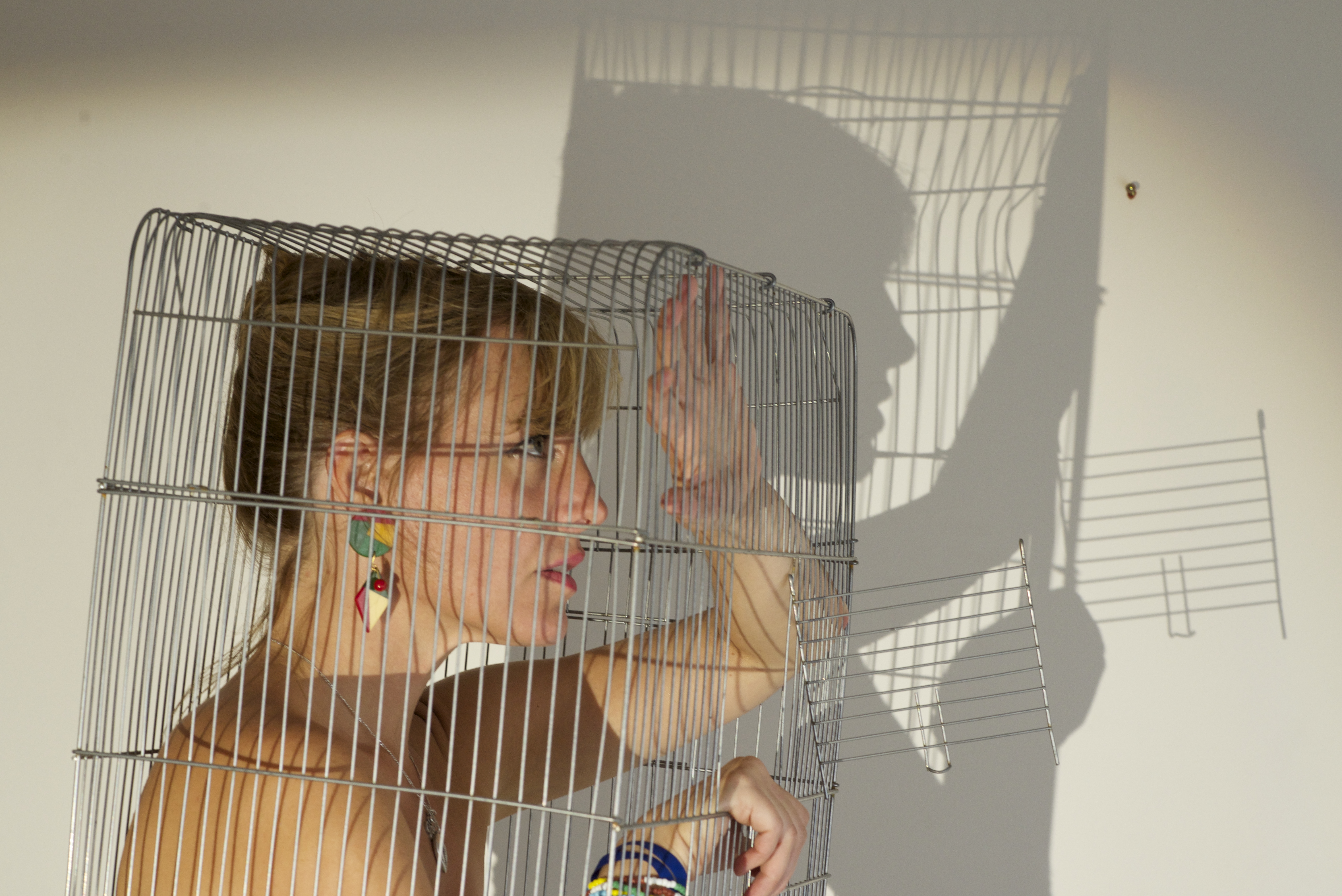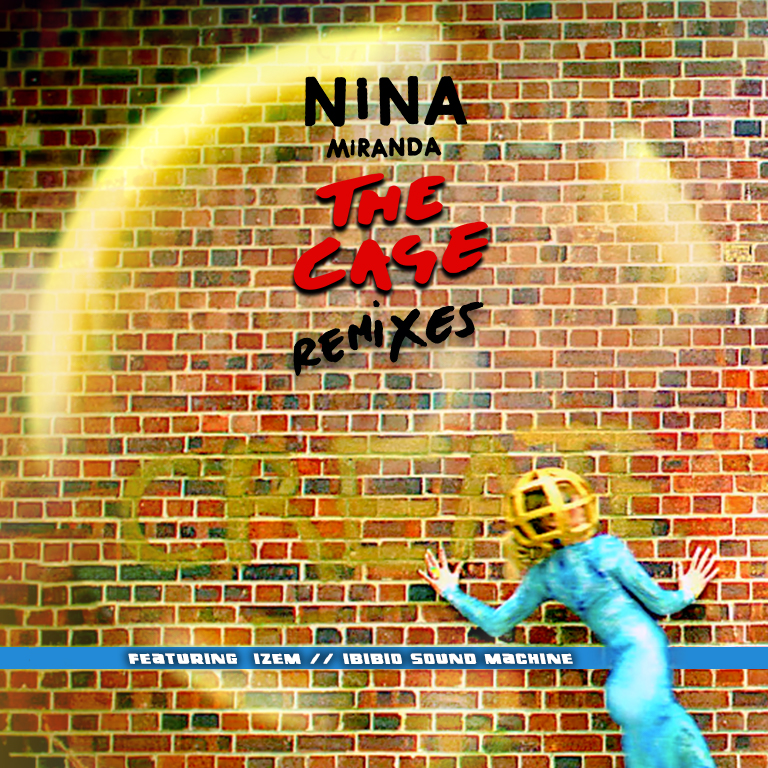
Nina Miranda’s first solo project, Freedom of Movement, is a vibrant mix of Brazilian rhythms, modern experimental electronic sounds, and sincere acoustic melodies. The album leads you through a genre-bending journey that explores the cultural identity Nina holds as a Brazilian and a Londoner. The dueling nature of her contrasting identities is present throughout the album, where she smoothly switches from English to Portuguese within a song and blends traditional Brazilian percussions with nu-disco and funk. Yet, it’s the Brazilian influences that create the unique captivating sounds, including a flurry of maracas, strings, and even bird and ocean sounds, all of which come together to induce a tropical atmosphere.
We spoke to Nina about Freedom of Movement and the inspiration behind creating her first solo album.
What was the initial motivation or vision behind the creation of Freedom of Movement?
Freedom of Movement is my first solo album, after a long career fronting several bands. I wanted to make an album that I would buy, and the albums that I buy aren’t usually the ones that are too fixed on traditional arrangements or verses and choruses. They have lots of time for the musicians to create an atmosphere for the listener to get lost in. I wanted it to be escapist and free, to reflect my mixed heritage and my view of the world which is wide open in its curiosity. Sometimes critical and questioning but mainly looking for things to love and rejoice in. To connect with and converse with a light at the end of the tunnel. If it can’t be found, we must look harder for the switch. Rhythm and percussion are very important to me and these run through the album, they are the means of transport. There is a lot of movement on this record.
I love your interpretation of Julia, what was behind your decision to cover this song and what meaning does it hold for you?
I love ‘Julia’ for the imagery in the lyrics. It reflects how I see the passing away of people we love, they don’t die, they dissolve into nature, be it sea, sky or a message whispered from a shell. Hearing that both John and Paul lost their mothers young, it makes sense to me how much they wanted to fill the void in others’ lives. The love void, the belonging void, to fill in the questions with hope and colour and possibilities of joy through painting pictures like ‘Julia, seashell eyes, silent cloud touch me’. My father is Brazilian and my mother is English. My sister is called Julia, so here I sing this in both languages and accents, like they’re both present, blessing her. We moved to England without my father when Julia was only five. We could have heard her name in his voice more often, he calls her “Julinha’ which sounds so sweet. Chris Franck (also in Smoke City, Da Lata, Shrift, Zeep), who I recorded this with, is also a huge fan of the Beatles and Brazilian music of the most organic kind, this felt like a perfect match. ‘Julia’ sounds a bit like she’s riding side-saddle on a horse because of the lilting samba rhythm.
Your music has many traditional rhythms and captivating genre fusions- How has your music been influenced by your Brazilian roots and have you found yourself influenced by London’s music scene as well?
My parents always had music on as I was growing up in Brazil. My English Aunty would also send albums over from the UK. There were a lot of Rock n’ Roll, Jazz and old Brazilian records. My last month in Brazil before we moved to live in England was like a technicolor dream. My parents had just broken up, and we were living in Rio at my great Aunty’s house. It was full, it was hot, we’d go to the beach, there were monkeys in the trees. I had a lot of nightmares, but the days were good. We went to the Carnival, in the street there were people standing on the colorful ‘fuscas” (Volkswagen Beetles). Everyone was dressed-up (home-made back then, not the million Reais garish T.V. outfits favoured now). There was sound, colour, joy, and music and singing everywhere, and loads of rhythm.
Arriving in London it felt cold in almost every sense, but my mind was opened by a music program called ‘Top of the Pops’ Pop music in 1978 which was very exciting. Ian Dury and The Blockheads and Grace Jones left lasting impressions.Then the two-tone movement came in with bands like The Specials and Special AKA and it helped stop the prevalent racism in the streets. My elder brother was mad about music and through him we heard lots of Ska, then reggae and Dub. Then later Brazilian Music, his compilations, then mine, would circulate across the city. Then he went to Jungle, and I remember going with him to Rio and him playing Jungle to ‘Cariocas’ (Rio people), for the first time. I went crazy on the dance floor so proud of this import that to me sounded like an obvious new direction for the path of Brazilian music.
Who did you listen to growing up? What was your introduction to creating music?
My favourites were The Beatles and Carmen Miranda, Santana, and Earth Wind & Fire. I loved disco. Later JJ Cale, Joni Mitchell, and then back into Brazilian Music.
I started creating music with my friend Deirdre in London when I was eleven, we’d make up songs and dance routines (I still remember the words), and she would play the piano. I left the school where we were at because it was too rough (violent, racist, miserable), and I wasn’t learning anything. Deirdre warned me that I’d become a vegetarian lesbian when I went to the infamous Camden School for girls. It was there when I joined a band. We did Ska and Sade covers. Then I moved school again and wrote folky numbers with my boyfriend. Later, at the Art Foundation, I recorded with some pub friends, Nigel Godrich (Radiohead producer), used his downtime at Rac Studios.
I then joined a hip-hop/ jazz collective called Sweatmouth, they used Brazilian samples and added live percussion acoustic guitar, horns and vocals. We released two EP’s and played 3 concerts. That’s when my friend and DJ Marc Brown saw me live, he said he’d record a backing track especially for me, that was “Underwater Love” and we became Smoke City.
Freedom of Movement has many political undertones and overtones – what current issues are you passionate about and how did you incorporate this into the album?
I don’t like boundaries and divisions between people. Here, Brexit is the biggest con, the British people, especially the working class are continually duped by the conservative party, who is boosted by the right-wing media. I, like most people, feel the current president of the USA stands for everything that is wrong in society. A racist and a misogynist who is building walls not bridges and encouraging the proliferation of guns and armaments, harnessing death and corruption, not life, health and harmony. In Brazil, there is also a terrible political situation, afro-Brazilian culture is under threat from the evangelical churches. There is less funding than ever for education and health. Also, workers rights being eroded. On my album, I celebrate exchange, unity through diversity, nature, and love. I hope to encourage others to be brave and express their feelings through different mediums and find people to spar with on their journey.
Was the creative and songwriting process different for your solo album as opposed to your work with Smoke City, Zeep, and Shrift?
I had a lot more freedom on this album, as this was in my name. Having worked in London and Rio for many years I was extremely lucky with the pool of talented musicians, producers, and engineers, I could work with. Eventually, I found that I had to learn new skills to be able to work from home; such as engineering, programming, and producing. Sometimes, it felt a little lonely but mainly far from that as I have so many excellent friends and collaborators on this record.
Having released ‘Shrift’ on Six Degrees I already had a great music and work/A&R rapport with Bob Duskis & Pat Berry, Los head-honchos. Talking to them on Skype has always been fun, heart-warming, constructive and inspiring. They were encouraging of my new music, so signing my musical baby to them felt great, and like a home-from-home in San Francisco. Part of the signing deal is that they take me out to lunch with Carlos Santana. Santana Abraxas is possibly the biggest inspiration to my solo album and one of the best life mood- enhancers on any occasion.

Nina Miranda – The Cage Remixes EP cover artwork.
What was the behind the inspiration to create an EP of remixes and what was it like revisiting these songs?
The Cage and The Garden started off as one track. “The Cage’, the original recording, was 12 minutes long and I managed to cut it down by half. Just before the album went to for final mastering, a producer friend convinced me to let him have a go at adding an extra chorus. He did this and some other slight changes and beefed-up the mix, and suggested we cut the song in half to make ‘The Cage’ and ‘The Garden’ separate. However, as I like to keep things fresh, I thought I’d go with this new idea at the last post. But, I kind of regret it as I love the original…because it’s fucking original! So, that original ‘1970’s mix’ is on the EP. On the Ibibio punk mix, there’s the extra added shouty vocal intro that Max Grunhard (Ibibio Sound Machine, Vanguard studios) insisted I shouted, he even put me in the bathroom to record it.
Why did you choose to remix the songs “The Cage” and “Garden” in this EP?
My original idea (before deciding to do a full varied album), was to do a project called ‘The Cage and The Garden ‘I’d take this Chorus to different musicians and see how they interpret it. What does their cage sound like? What does their garden sound like? Domenico and Kassin answered super well.
As Max’s shouty vocals of mine never got on the album, I thought it would be good for him to have a go at making The Cage his own in a remix. I’m very finicky about what I want to hear so I thought this was his chance to follow his vision. He called in his bandmate Tony Hayden (Trombony), to help on production and they did these two excellent drum and bass remixes. Then there’s my compadre izem, We’d swapped my vocals on his track ‘Agua Viva’ (very well received), for a remix and here he delivered something so crisp, modern and cinematic. I absolutely love it.
Would you say that these remixes to your songs added any newfound emotional depth or new meaning from your original content?
They’re snappy, futuristic, playful, and exciting. I love them, I’m making videos for them. They deserve it.
Now that you have released your first solo project, do you have ideas or plans for other upcoming projects or collaborations?
I will be on the next Nostalgia 77 album, a stunning folky number singing with my co-”Cagee” Jaelee Small. I’m recording on a track for Gilles Peterson’s next release. “Underwater Love” has had a re-working for Monkey Man and Prince Fatty’s album which includes Pharcyde’s Fatlip and London’s Soul star Omar.
I’m really excited about my next solo album, I already have quite a few songs for it. I think people will be pleasantly surprised at the new places we’ll go. The songs are pretty epic, one has an incredible 5 piece string section, another built around a mad drum machine and vocal processor jam, another is like a piece of spiritual comedy. Each song would make a great cartoon strip. One minute up in space, then on a futuristic stage, and then lead you into a forest to build a giant paper maché person. One minute you have a tail, the next you have honey all over your face and you’re running down an alley… but you’re safe, for as Kari reminds you; “You’re a child of the Universe, no less than the trees and the stars”
